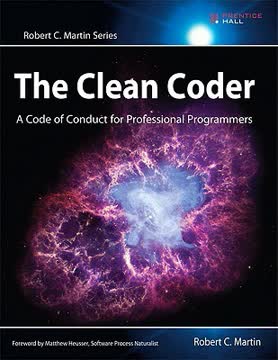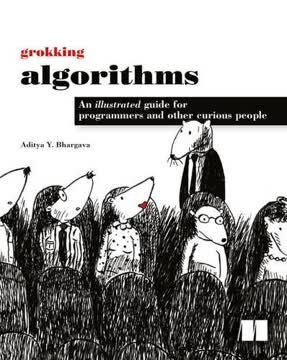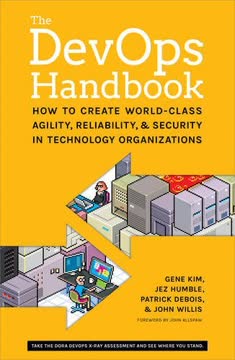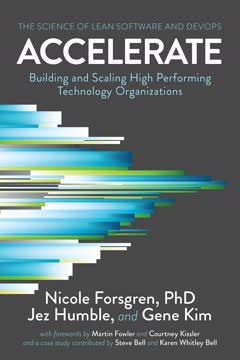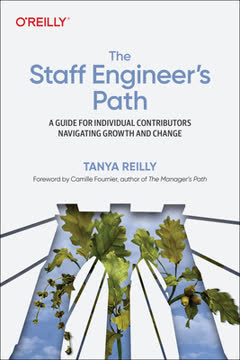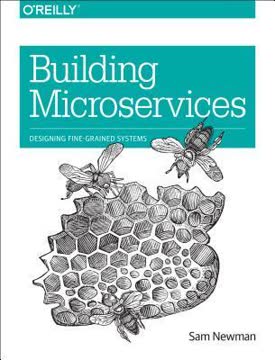重点摘要
1. 微服务:小型、自治的服务协同工作
微服务是小型、自治的服务,它们协同工作。
微服务的基础。 微服务架构基于将软件开发为一组小型、独立服务的原则。每个服务专注于做好一件事,运行在自己的进程中,并通过轻量级机制如HTTP/REST API进行通信。与单体架构相比,这种方法允许更大的灵活性、可扩展性和可维护性。
优点和挑战。 微服务的主要优点包括:
- 改善模块化
- 更容易扩展单个组件
- 技术多样性
- 增强故障隔离
- 更快的部署周期
然而,微服务也带来了挑战,如:
- 增加的操作复杂性
- 分布式系统问题(如网络延迟、容错)
- 服务间的数据一致性
2. 进化架构:适应不断变化的需求
架构师的角色是看大局,并理解这种平衡。
拥抱变化。 进化架构强调系统需要随着时间的推移适应不断变化的需求。这种方法认识到不可能预测所有未来的需求,因此专注于创建一个可以演变的灵活基础。
关键原则:
- 渐进式变化:进行小而频繁的更新,而不是大而不频繁的更新
- 指导性变化:使用原则和实践来指导架构决策
- 多种架构:认识到系统的不同部分可能以不同的速度演变
在这种模型中,架构师更像是城市规划者,设定指导方针和约束,而不是规定每一个细节。这允许团队在确保整体系统一致性的同时做出本地决策。
3. 建模服务:定义边界和上下文
我们将服务边界集中在业务边界上,使得代码所在的位置对于特定功能来说是显而易见的。
领域驱动设计。 有效地建模服务需要对业务领域有深刻的理解。领域驱动设计(DDD)提供了定义服务边界的有价值概念:
- 有界上下文:具有明确边界的领域区域
- 普遍语言:开发人员和领域专家共享的通用语言
- 聚合:作为一个单元处理的领域对象集群
识别服务边界:
- 与业务能力对齐
- 封装数据和行为
- 最小化服务之间的依赖
- 考虑团队结构和沟通模式
定义良好的边界导致更具凝聚力的服务和更松散的耦合,促进独立开发和部署。
4. 集成策略:选择合适的通信方式
保守地做你该做的事,宽容地接受他人所做的事。
集成的重要性。 有效的集成对于微服务无缝协作至关重要。集成技术的选择显著影响系统的灵活性、性能和可维护性。
关键集成模式:
- 同步通信:REST,gRPC
- 异步通信:消息队列,事件流
- API网关:用于请求路由和组合
- 服务网格:用于处理服务间通信
最佳实践:
- 使用与技术无关的协议(如HTTP)
- 实施容错读者以优雅地处理变化
- 设计故障处理机制,如断路器和隔板
- 考虑事件驱动架构以实现松散耦合
合适的集成策略取决于具体的用例、性能要求和团队专业知识。
5. 拆分单体:向微服务过渡
将我们的单体视为一块大理石。我们可以将其炸毁,但这很少有好结果。更明智的做法是逐步削减它。
渐进式方法。 从单体架构向微服务过渡最好逐步进行。这允许团队在最小化风险的同时学习和适应。
拆分单体的步骤:
- 识别现有代码库中的接缝
- 将有界上下文提取到单独的模块中
- 重构共享数据结构和数据库
- 创建用于模块间通信的API
- 将模块提取为单独的服务
- 将新功能实现为微服务
需要考虑的挑战:
- 服务间的数据依赖
- 跨服务边界的事务完整性
- 网络通信的性能影响
- 管理多个服务的操作复杂性
从最简单、风险最小的提取开始,建立信心和经验,然后再处理系统中更复杂的部分。
6. 部署技术:确保可靠性和可扩展性
如果做某事是正确的但很困难,我们应该努力使事情变得更容易。
自动化部署。 可靠和可扩展的部署对于微服务的成功至关重要。持续集成和持续交付(CI/CD)实践对于管理增加的部署复杂性至关重要。
关键部署技术:
- 基础设施即代码(IaC)
- 容器化(如Docker)
- 编排平台(如Kubernetes)
- 蓝绿部署
- 金丝雀发布
部署考虑:
- 服务发现和配置管理
- 监控和日志记录
- 安全性和访问控制
- 数据库迁移和数据一致性
投资于工具和自动化,使部署更容易、更快、更可靠。这使团队能够自信地频繁部署,实现微服务架构的全部优势。
7. 测试微服务:在分布式系统中保持质量
移动部件越多,我们的测试可能越脆弱,确定性越低。
全面的测试策略。 测试微服务需要多层次的方法,以确保单个服务的质量和整体系统行为。
微服务的测试金字塔:
- 单元测试:快速、集中的组件测试
- 集成测试:验证服务之间的交互
- 合同测试:确保服务符合约定的接口
- 端到端测试:验证整个系统的行为
测试挑战:
- 由于分布式特性而增加的复杂性
- 管理跨服务的测试数据
- 模拟生产环境
- 处理异步交互
强调通过单元和集成测试实现快速反馈循环,同时使用较少、精心选择的端到端测试来验证关键路径。考虑使用消费者驱动的合同来有效管理服务依赖。
8. 监控和安全:保持微服务的健康和保护
良好的日志记录,特别是从多个系统聚合日志的能力,不是为了预防,而是有助于检测和恢复不良事件。
整体方法。 有效的监控和安全对于维护健康的微服务生态系统至关重要。在分布式系统中,这些方面变得更加具有挑战性和重要性。
监控最佳实践:
- 集中日志记录和日志聚合
- 分布式追踪(如使用关联ID)
- 实时警报和仪表板
- 应用性能监控(APM)
- 对关键路径进行合成监控
安全考虑:
- 服务间的身份验证和授权
- 用于边缘安全的API网关
- 秘密管理
- 网络分段
- 定期安全审计和渗透测试
实施纵深防御策略,保护外围和各个服务。使用自动化确保在所有服务中一致应用安全策略。
9. 康威定律:对齐组织和系统设计
康威定律强调了试图强制执行与组织不匹配的系统设计的危险。
组织影响。 康威定律指出,系统设计反映了组织内的沟通结构。这一原则对微服务架构有重要影响。
对齐团队和服务:
- 围绕业务能力组织团队
- 赋予团队对服务的端到端所有权
- 最小化跨团队依赖
- 培养协作和共同责任的文化
考虑事项:
- 团队规模和组成
- 沟通模式和工具
- 决策过程
- 技能发展和知识共享
认识到组织结构和系统架构是相互关联的。同步演变两者,以创建有利于成功的微服务开发和运营的环境。
10. 扩展微服务:处理增长和故障
在规模上,即使你购买最好的设备,最昂贵的硬件,你也无法避免事情会失败的事实。
为扩展和弹性设计。 微服务架构必须设计为能够优雅地处理需求增长和不可避免的故障。
扩展策略:
- 水平扩展(增加更多实例)
- 垂直扩展(增加每个实例的资源)
- 缓存(内存中,分布式)
- 数据库分片和复制
- 异步处理和事件驱动架构
弹性模式:
- 断路器以防止级联故障
- 隔板用于故障隔离
- 带指数退避的超时和重试
- 功能的优雅降级
CAP定理考虑:
- 一致性
- 可用性
- 分区容忍
理解在扩展分布式系统时需要权衡。根据具体需求和约束进行优先排序。实施可观察性和混沌工程实践,以持续改进系统弹性。
最后更新日期:
FAQ
What's Building Microservices by Sam Newman about?
- Microservices Architecture: The book explores microservices, which are small, autonomous services that collaborate to form a system. It highlights how this architecture can enhance software delivery speed and flexibility.
- Business Domain Focus: Microservices are modeled around business domains, aligning software design with business needs and avoiding issues of monolithic architectures.
- Practical Guidance: Sam Newman provides real-world examples from companies like Netflix and Amazon, offering a comprehensive guide for adopting or understanding microservices.
Why should I read Building Microservices by Sam Newman?
- Comprehensive Resource: It covers design, development, deployment, testing, and maintenance of microservices, making it ideal for those transitioning from monolithic systems.
- Real-World Examples: The book includes insights from organizations that have successfully implemented microservices, providing practical perspectives and lessons learned.
- Continuous Learning: It encourages embracing continuous learning to keep up with the fast-evolving nature of microservices technology and practices.
What are the key takeaways of Building Microservices by Sam Newman?
- Microservices Benefits: The book outlines benefits like improved scalability, resilience, and quick adoption of new technologies due to service autonomy.
- Loose Coupling and High Cohesion: Emphasizes designing services to be loosely coupled and highly cohesive, facilitating easier maintenance and updates.
- Integration Strategies: Discusses synchronous and asynchronous communication strategies, crucial for maintaining service autonomy and effective collaboration.
What is the definition of microservices according to Building Microservices by Sam Newman?
- Small, Autonomous Services: Defined as "small, autonomous services that work together," highlighting their independence and functionality without reliance on others.
- Business Functionality Focus: Each microservice handles a specific business capability, aligning with organizational goals and prioritizing work effectively.
- Decoupled Communication: Services communicate through well-defined APIs, maintaining loose coupling and enabling independent development and deployment.
How does Building Microservices by Sam Newman suggest modeling services?
- Bounded Contexts: Introduces bounded contexts from Domain-Driven Design to define service boundaries, with each context representing a specific responsibility.
- Loose Coupling and High Cohesion: Stresses that related functionality should reside within the same service, while unrelated functionality should be separated.
- Iterative Approach: Recommends refining service boundaries over time to accommodate changes in business requirements and technology.
What are the integration strategies discussed in Building Microservices by Sam Newman?
- Synchronous vs. Asynchronous: Contrasts synchronous communication, where a service waits for a response, with asynchronous communication, where services operate independently.
- Event-Driven Architecture: Advocates for event-driven architectures, where services emit events to signal state changes, promoting loose coupling.
- REST and RPC: Discusses RESTful APIs and Remote Procedure Calls for service communication, emphasizing technology-agnostic APIs for flexibility.
What are the challenges of deploying microservices as outlined in Building Microservices by Sam Newman?
- Increased Complexity: Warns of the complexity due to interdependencies between services, which can lead to deployment challenges without proper management.
- Continuous Integration and Delivery: Emphasizes robust CI/CD practices to manage microservices effectively, ensuring quick and reliable deployments.
- Monitoring and Management: Suggests comprehensive monitoring solutions to track the health and performance of each service independently.
How does Building Microservices by Sam Newman address testing in microservices?
- Types of Tests: Categorizes tests into technology-facing and business-facing, including unit, integration, and end-to-end tests for service reliability.
- Consumer-Driven Contracts: Introduces consumer-driven contracts to validate service interactions, ensuring changes in one service don't break dependent services.
- Automated Testing: Advocates for automated testing to maintain quality and speed in deployment, allowing confident release of changes.
What is the significance of Conway’s Law in Building Microservices by Sam Newman?
- Organizational Structure and Architecture: Discusses Conway’s Law, which states that system designs reflect the communication structures of organizations.
- Team Autonomy: Emphasizes organizing microservices around autonomous teams that own specific services, fostering accountability and ownership.
- Impact on Design: Highlights the importance of aligning team structures with service boundaries for effective collaboration and faster feature delivery.
What are the best quotes from Building Microservices by Sam Newman and what do they mean?
- Freedom to React: "Microservices give us significantly more freedom to react and make different decisions," highlighting agility compared to monolithic architectures.
- Service Autonomy: "The golden rule: can you make a change to a service and deploy it by itself without changing anything else?" emphasizes designing independent services.
- Postel's Law: "Be conservative in what you do, be liberal in what you accept from others," underscores flexibility in service interactions while maintaining strict internal standards.
What are some architectural safety measures discussed in Building Microservices by Sam Newman?
- Circuit Breakers: Prevent cascading failures by stopping further calls to a failing service, allowing it to recover without being overwhelmed.
- Bulkheads: Isolate different parts of a system to prevent a failure in one area from affecting others, enhancing resilience and stability.
- Timeouts: Setting appropriate timeouts for service calls to avoid hanging requests, ensuring services can fail fast and recover effectively.
How does Building Microservices by Sam Newman suggest handling service discovery?
- Dynamic Service Registries: Discusses using tools like Consul and Eureka for managing service discovery, allowing easy registration and discovery of services.
- DNS as a Solution: Mentions DNS for service discovery, though it may not suit highly dynamic environments, suggesting load balancers to mitigate limitations.
- Human-Friendly Interfaces: Emphasizes creating user-friendly interfaces for service discovery, aiding developers in finding and understanding available services.
评论
《构建微服务》获得了褒贬不一的评价,许多人称赞其对微服务概念的全面概述和实用建议。读者欣赏作者谨慎的态度和真实的案例。批评者指出该书在某些主题上缺乏深度,并有可能过度推销微服务。许多人认为这本书对初学者很有价值,但对有经验的架构师来说用处不大。该书涵盖了微服务的各个方面,包括设计、部署、测试和扩展。一些读者希望能有更多具体的实现细节,而另一些人则重视其对软件架构的高层次视角。
Similar Books
